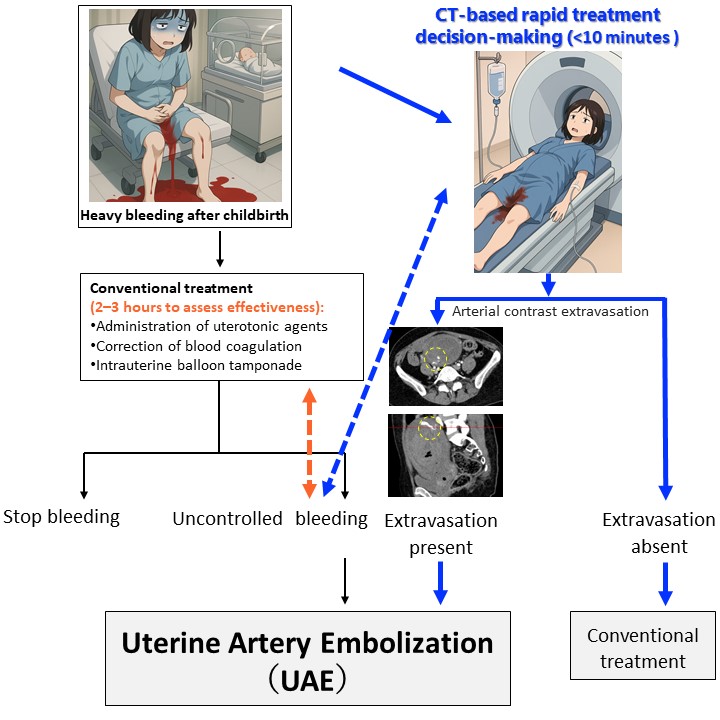New CT-based Indicator Helps Doctors Predict Life-Threatening Postpartum Bleeding Cases

New CT-based Indicator Helps Doctors Predict Life-Threatening Postpartum Bleeding CasesResearchers from Kumamoto University have identified a distinctive CT imaging pattern that can predict which women experiencing severe postpartum hemorrhage (PPH) are most likely to need life-saving interventions. The new finding, termed PRACE (Postpartum hemorrhage, Resistance to treatment, and Arterial Contrast Extravasation), was observed in nearly one-third of patients undergoing dynamic CT scans and was strongly associated with the need for emergency procedures such as uterine artery embolization.
Postpartum hemorrhage remains a leading cause of maternal death worldwide. While most cases can be managed with medications and basic interventions, a significant number become life-threatening and require more invasive treatment. Until now, there has been no reliable way to identify in advance which cases would prove resistant to standard therapies.
In a nationwide study involving 43 advanced medical centers across Japan, researchers analyzed 352 cases of severe PPH and found that 205 underwent dynamic CT scanning. Of these, 58 cases (32.2%) showed the PRACE pattern, characterized by contrast agent leaking into the uterine cavity during the early phase of imaging—signaling active arterial bleeding.
Patients with PRACE had more than triple the likelihood of needing uterine artery embolization (UAE) compared to those without the finding (86.2% vs. 28.7%), and were more likely to suffer from blood clotting abnormalities and require large-volume transfusions. The presence of PRACE was the single strongest predictor for the need for UAE, with an odds ratio of 27.74.
"PRACE is a game-changer in how we assess and respond to critical postpartum bleeding," said Professor Eiji Kondoh of Kumamoto University’s Faculty of Life Sciences. “By using dynamic CT imaging, we can now detect early signs of treatment-resistant bleeding and act swiftly to save lives.”
The researchers suggest that incorporating dynamic CT into emergency obstetric care protocols may significantly improve maternal outcomes. They also propose updating the traditional “4 Ts” classification of postpartum hemorrhage (Tone, Trauma, Tissue, Thrombin) to include a fifth—“CT findings”—to better stratify risk.

Image Title: Using dynamic CT to assess severity in postpartum hemorrhage cases
Image Caption: Compared to conventional treatments such as uterotonics, dynamic CT enables earlier and more accurate screening of patients who require uterine artery embolization.
Reference
Image Caption: Compared to conventional treatments such as uterotonics, dynamic CT enables earlier and more accurate screening of patients who require uterine artery embolization.
Reference
| Authors | Munekage Yamaguchi; Akihito Sagara; Yasunori Nagayama; Jun Morinaga; Yoshinori Yamanouchi; Shintaro Makino; Shigetaka Matsunaga; Hiroaki Tanaka; Junichi Hasegawa; Tomoaki Ikeda; Takashi Sugiyama; Eiji Kondoh |
| Title of original paper |
Dynamic Computed Tomography Findings as Indicators of Uterine Artery Embolization in Postpartum Hemorrhage |
| Journal | JAMA Network Open |
| DOI | 10.1001/jamanetworkopen.2025.12209 |
